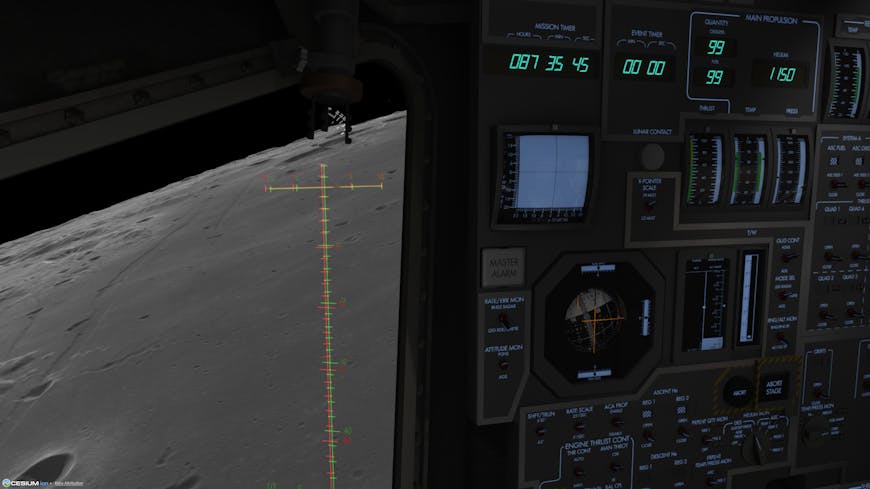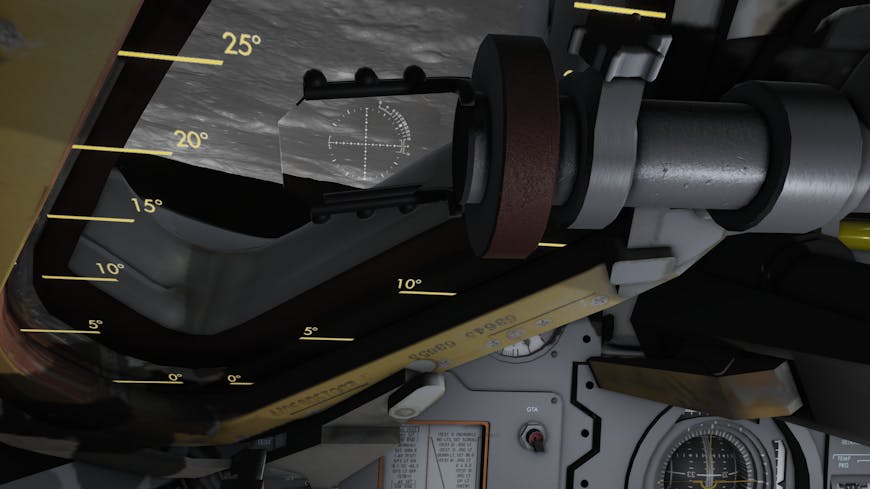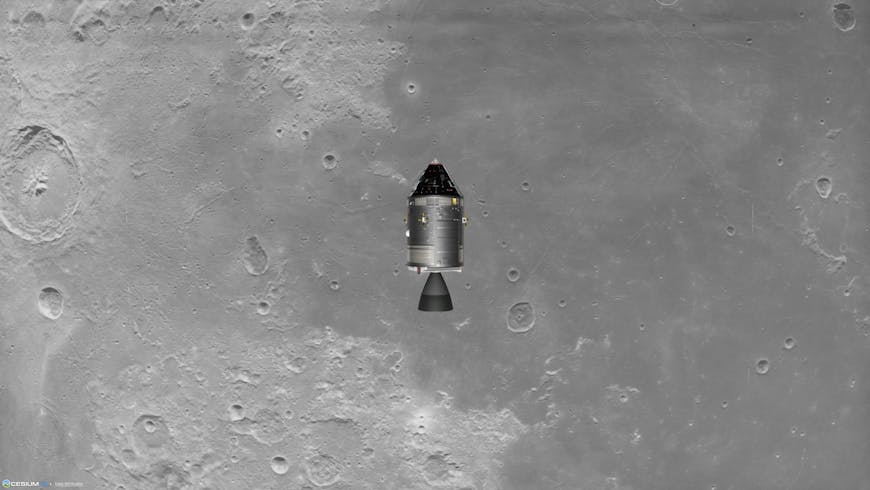“Reentry” Blends Gaming and Training with Cesium Moon Terrain
“Reentry - A Space Flight Simulator” enables players to experience the evolution of human spaceflight, blending a game with a simulator, so users learn to operate spacecraft with realistic procedures and, soon, Cesium Moon Terrain.
Reentry is used for both fun and research. Creator Petri Wilhelmsen is replacing his homebuilt Moon renderer with Cesium Moon Terrain. Courtesy Petri Wilhelmsen.
Reentry users make their way through NASA’s Projects Mercury, Gemini, and Apollo while studying the history of human spaceflight and gaining practical skills. The ultimate goal is to land on the Moon.
A select group of players called “test pilots” will be the first to orbit and walk on Cesium Moon Terrain in Reentry, with this feature available to other users in early 2025.
Reentry is not limited to gamers. Creator Petri Wilhelmsen tailors instances of the simulator for aerospace industry agencies, and users are also testing VR implementation.
These immersive 3D trainings bring aerospace professionals up to speed with realistic models and simulations for studies and research related to human space exploration. Wilhelmsen can build in failures or events so organizations can see how people behave in these situations, such as loss of power, fuel management, and isolation.

Lunar Module in orbit around the Cesium Moon. Courtesy Petri Wilhelmsen.
Wilhelmsen began working on Unity-based Reentry in 2015. It was released as “early access” on Steam in 2018 and remained a hobby for Wilhelmsen until summer 2024, when he joined Helsinki-based studio Lyra Creative and Reentry became his full-time project. Members of Lyra Creative are focused on immersive experiences, expanding users’ views and vital training opportunities.

View from the commander's window of the Apollo Command Module. Courtesy Petri Wilhelmsen.
Within a few hours of hearing about Cesium Moon Terrain, Wilhelmsen began incorporating it into Reentry via Cesium ion and Cesium for Unity. Cesium Moon Terrain is accurate, complete 3D Tiles of the lunar surface, enabling 3D visualizations, simulations, and analytics.
“Having a digital twin of the Moon, where craters and all the details of the Moon can be explored, is vital,” said Wilhelmsen. “Creating my own streamable Moon renderer is beyond my own capabilities, and, by using Cesium, I can instead focus on other aspects of the game.”
Wilhelmsen reports it took only 30 minutes to replace his lower fidelity Moon with Cesium Moon Terrain.

The Command Module Columbia looking down at the Apollo 11 landing site. Courtesy Petri Wilhelmsen.
The launch pad and spacecraft in Reentry are from asset stores, but he also makes some assets himself using Blender. The laser scan of the Apollo 11 Command Module, Columbia, for example, is from the Smithsonian Institution; Wilhelmsen modified it for Reentry to improve the panels. These assets are loaded directly into Unity.
Users in orbit see not only the Moon but also Earth—the Cesium globe via Cesium for Unity enables accurate, realistic visualizations for both enthusiastic gamers and those who are training and pushing boundaries. In the future, Wilehelmsen may incorporate Cesium World Terrain and satellite imagery for the launch areas, to add to the accuracy on Earth.

The Lunar Module preparing for descent and landing on the lunar surface. Courtesy Petri Wilhelmsen.
A number of users have remarked to Wilhelmsen that they remember events during these early space programs, and they are reliving the thrill and pride of humanity’s progress with Reentry.
To add Cesium Moon Terrain and other curated 3D data to your simulation, sign up for a Cesium ion account.